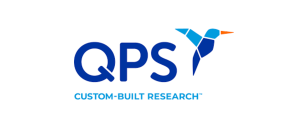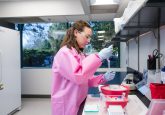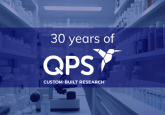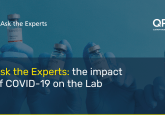Innovative new Leukopak facility at QPS: an interview with Polung Yang
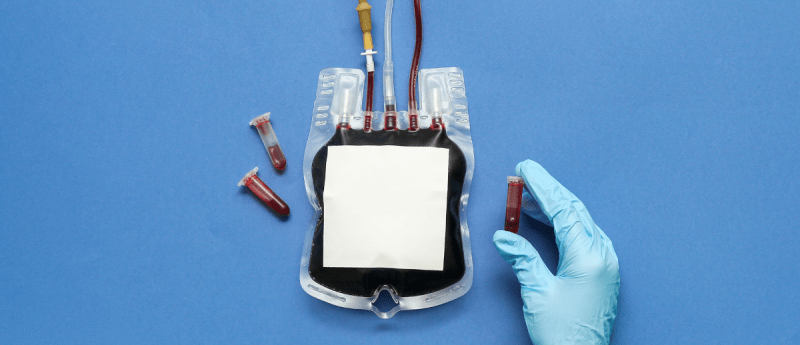
In this interview with Polung Yang (QPS; Taipei, Taiwan), we explore the evolution and innovation of automated procedures in primary cell procurement and delivery. Dr Yang describes how QPS’ leukopak facility is contributing to this innovation and its potential to reshape research, manufacturing and clinical trials.
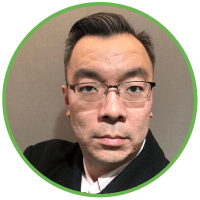 Polung Yang
Polung Yang
Study Director
QPS Toxicology Center (Taipei, Taiwan)
Dr Yang is currently a Study Director for the QPS Toxicology Center in Taiwan. Prior to the 10+ years’ experience in preclinical development and toxicological risk assessment emphasizing toxicology, PK, PD, pharmacology and immunology, Dr Yang focused his research interest on virus-host interactions from the perspective of host immune responses. Dr Yang is also a member of the American College of Toxicology and has been awarded a Diplomate American Board of Toxicology certification in 2019.
1. From your training in virology to your current works on toxicology, it seems to be a pretty big change. Can you tell us more about how the transition happened?
When I started out my graduate studies at Penn State in the Huck Institutes of the Life Sciences (back then in its infancy as the Life Science Consortium) (PA, USA), I was drawn to the intricate interplay between viruses and their hosts. Even though lifeless, all these varieties of nanoscale ‘constructs’ have evolved myriad ways to gain entry and co-opt our body for their ends—replication, assembly, release and further transmission—that give them almost life-like purposes. The targeted host, in return, co-evolved multiple layers of immune defenses, of which the leukocytes are the lynchpin initiating and coordinating all these innate and adaptive responses to suppress and eradicate these invading pathogens.
The similarity of toxicology to my experience working with viruses lies in this aspect of how our body deals with an external threat. Even as the doctrine of toxicology—’the dose makes the poison’—appears very different from the disciplines of virology, ultimately we are all trying to answer the same question: “How does our body, with all these tools at its disposal, react to these existential threats to its well-being, homeostasis and survival?” There are great stories to tell in this question, and I wish to have the opportunity to tell them from many different angles of life sciences: virology is one, and toxicology is another. So, it did not feel like a transition to me, but more like an ongoing adventure.
2. What’s so different working with human primary cells, then and now?
As I worked with HIV, I needed to harvest CD4+ T cells from the blood of donors. This was achieved by first concentrating and harvesting the peripheral blood mononuclear cells by density gradient centrifugation and then isolating the desired cells using magnetic beads coated with antibodies targeting specific cell surface markers. This was a time-consuming, small-scale process that was a ritual of all life-science laboratories working with human primary cells. This is why I am amazed by the state-of-the-art, automated procedures of leukapheresis utilized by institutes, organizations and pharmaceutical companies to obtain primary leukocytes at scale. The ability to quickly and effortlessly harvest the desired white blood cells of high purity and at large quantities will certainly make a positive impact on the planning and conduct of research and experimentations.
3. What sort of service and product is QPS providing with its new leukopak facility?
At QPS, we recognize the challenges that raw material sourcing can provide for manufacturing and clinical trials. We are building capabilities to preserve patient and donor material at the draw site to eliminate painful logistics and cell loss that can happen in transit. We are also exploring what other manufacturing and testing of cellular products our partners would find advantageous for us to perform. We will offer RUO and GMP fresh and cryopreserved leukopaks as well as other GMP services to enhance our customers’ research and clinical trial work. The packaging and delivery of cell therapies in ophthalmology, neurology and solid tumors have more challenges to solve when it comes to patient delivery and cell product packaging. Something as simple as feedback on patient delivery of the product in early-phase work can be truly impactful to the direction taken later with drug development. We are actively scouting and looking for innovative solutions to patient delivery and other methods that are further downstream in the clinical/commercialization space to be able to offer a unique and boutique experience to our clients.
4. What would you envision working on if such tools and services offered by QPS now were available for your primary research?
Oh, to think all the Friday-night happy hours this service could have saved me! Jokes aside, I would have been happy to revisit some of the most difficult experimentations involving infection of human primary T cells by the virions of HIV and investigation of the cellular responses to the infection. In particular, I was interested in how a viral factor, HIV-1 Nef, might have jumpstarted the T cell signaling machineries, which might result in the priming and/or activation of the host cells without proper receptor engagement and co-stimulation, with the downstream consequences of promoting viral transcription and replication. Meanwhile, it would have been of great interest to study at even greater detail how T cells in the face of this adverse challenge would counteract with their own arsenal, perhaps involving regulatory signaling such as CTLA-4 or other known or as yet-unknown factors. All these explorations would need high purity T cells at large quantities to tease out the intricate interplays.
5. Given the competitive services available with similar lines of products, what advantage can QPS offer that is unique to all the others?
As our motto—’custom-built research’—makes clear, our competitive advantage rests on our ability to provide quality products, reliable service and on-time delivery in a flexible package that is custom-built to the needs of our customers or sponsors. We promise services and products tailored to facilitate the most efficient execution of your research plans towards your research aims.
6. Looking forward, what sort of scientific achievement do you expect the leukopak facility of QPS to accomplish in the coming years?
We look forward to partnering with cutting-edge technologies in the CGT space to offer a quicker path to clinic. If the folks who are helping you with preclinical testing and clinical trial design and execution have tested and are familiar with using new tools on the market, the path to getting regulatory approval is a lot simpler. I am so impressed with the global medical affairs and regulatory offerings we have to support the needs of the innovation happening in the cell and gene therapy space. We look forward to being able to continue to solve pain points in the field with services in product design, development and clinical testing to get these revolutionary drugs to market quicker. The team involved with this work is the best team I have worked with. The story continues and I am lucky to be in it!
In association with

